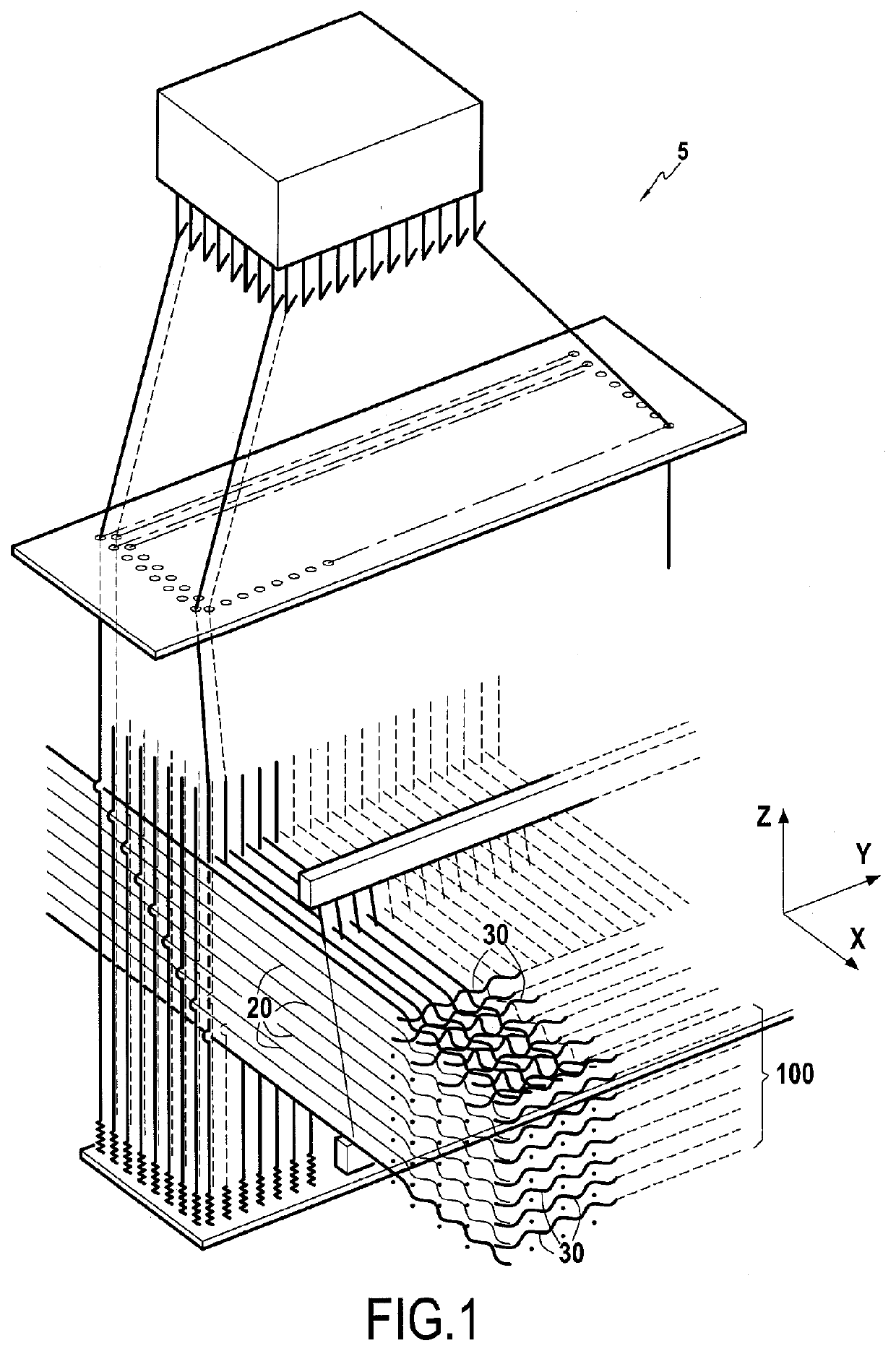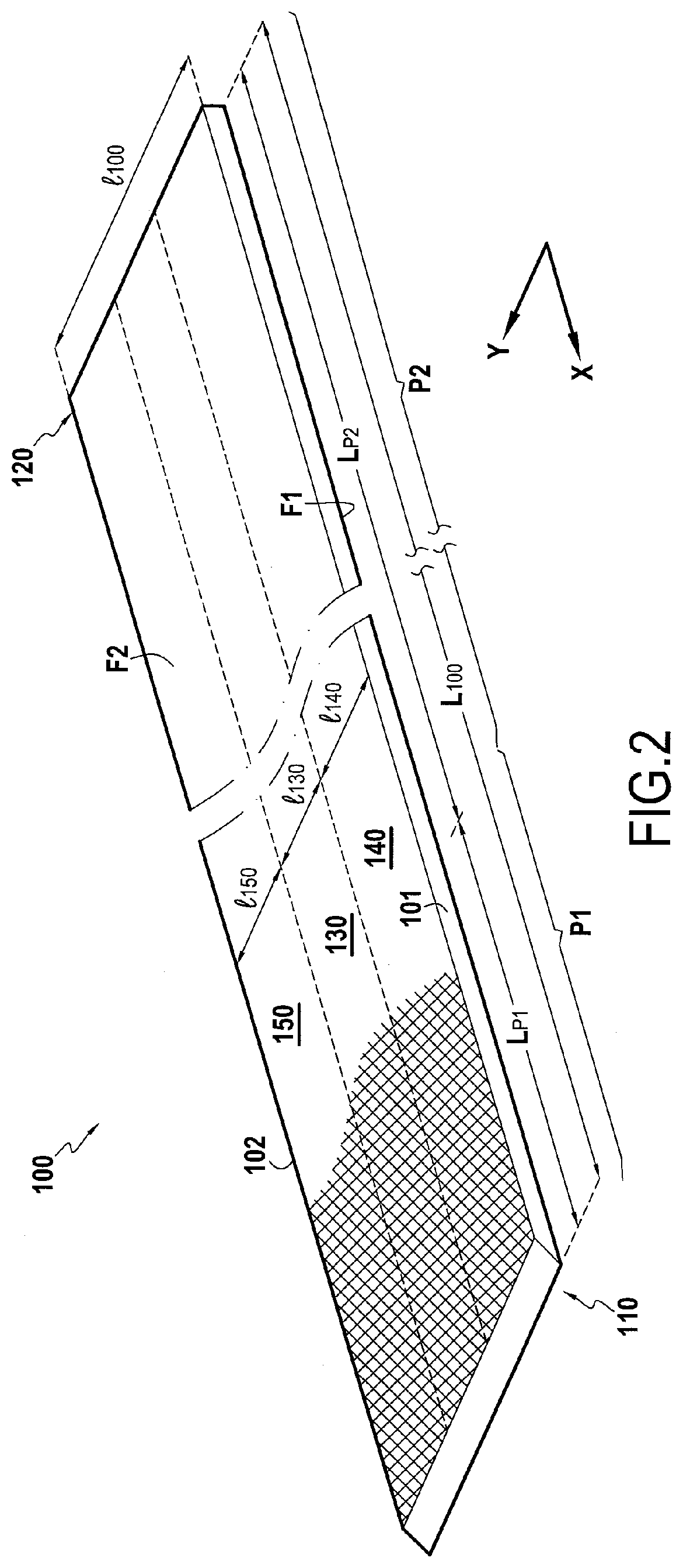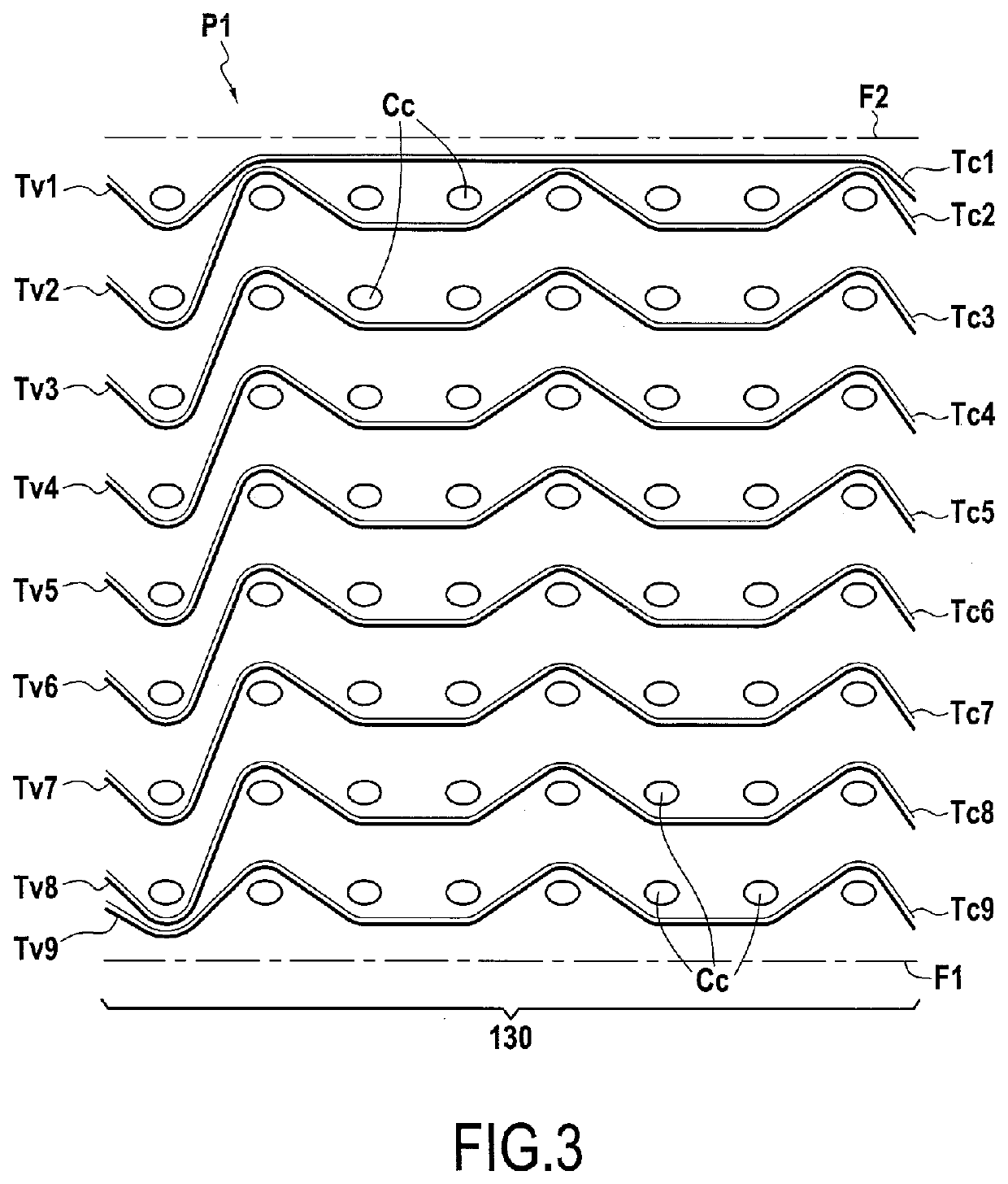Fiber texture for a casing made of composite material with improved impact resistance
a composite material and impact resistance technology, applied in the field of fiber texture, can solve the problems of high deformation rate, high mechanical properties, and third function of the casing material, and achieve the effects of good rigidity, and reducing the impact of us
- Summary
- Abstract
- Description
- Claims
- Application Information
AI Technical Summary
Benefits of technology
Problems solved by technology
Method used
Image
Examples
Embodiment Construction
[0048]The invention generally applies to fibrous textures intended for the manufacture of casings made of composite material, these casings including a barrel or a shroud with annular clamps at their ends.
[0049]As represented in FIG. 1, a fibrous texture 100 is produced in a known manner by weaving by means of a jacquard-type loom 5 on which a bundle of warp yarns or strands 20 has been disposed in a plurality of layers, the warp yarns being interlinked by weft yarns or strands 30.
[0050]The fibrous texture is produced by three-dimensional weaving. By “three-dimensional weaving” or “3D weaving” is meant here a weaving mode by which at least some of the weft yarns interlink warp yarns on several layers of warp yarns or vice versa. The fibrous texture may have an interlock weave. By “interlock” weave is meant here a weave in which each layer of weft yarns interlinks several layers of warp yarns, with all the yarns of a same weft column having the same movement in the weave plane. Usabl...
PUM
| Property | Measurement | Unit |
|---|---|---|
| length | aaaaa | aaaaa |
| width | aaaaa | aaaaa |
| mechanical properties | aaaaa | aaaaa |
Abstract
Description
Claims
Application Information
 Login to View More
Login to View More - R&D
- Intellectual Property
- Life Sciences
- Materials
- Tech Scout
- Unparalleled Data Quality
- Higher Quality Content
- 60% Fewer Hallucinations
Browse by: Latest US Patents, China's latest patents, Technical Efficacy Thesaurus, Application Domain, Technology Topic, Popular Technical Reports.
© 2025 PatSnap. All rights reserved.Legal|Privacy policy|Modern Slavery Act Transparency Statement|Sitemap|About US| Contact US: help@patsnap.com



